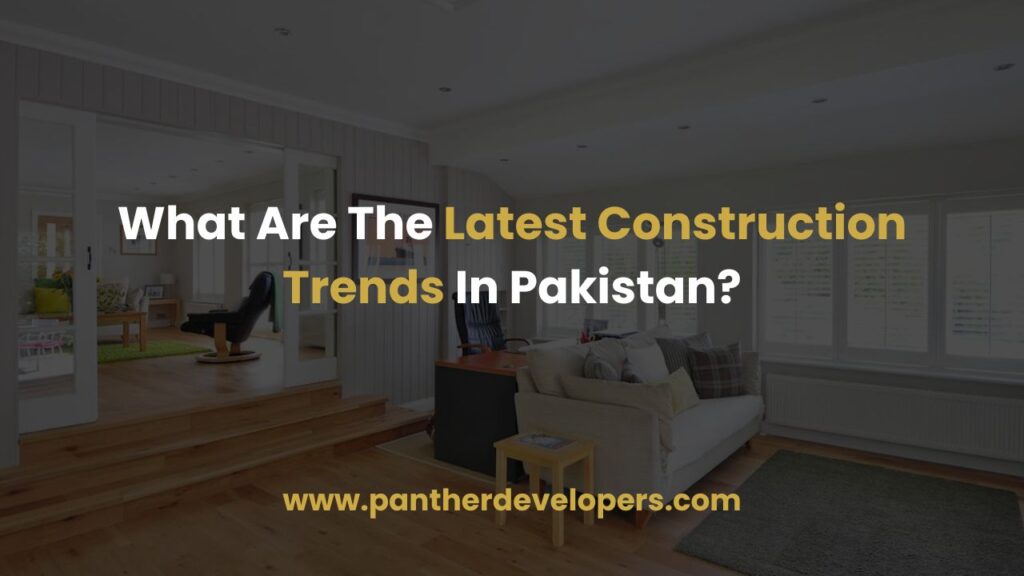The construction industry in Pakistan has been witnessing a significant transformation in recent years, driven by technological advancements, changing consumer preferences, and a growing emphasis on sustainability.
As the country continues to develop and urbanize, the construction sector plays a crucial role in shaping the built environment and meeting the evolving needs of its citizens.
In this article, we will explore the latest construction trends in Pakistan, shedding light on the innovative practices and emerging technologies that are reshaping the industry.
Key Construction Trends in Pakistan
| Trend | Description |
|---|---|
| Sustainable and Green Construction | Incorporating eco-friendly materials, energy-efficient designs, renewable energy sources, and water conservation measures. |
| Prefabricated and Modular Construction | Off-site manufacturing of building components or modules for efficient assembly on-site. |
| Building Information Modeling (BIM) | Digital 3D modeling and integration of building data for improved collaboration, clash detection, and cost estimation. |
| Smart and Intelligent Buildings | Integration of advanced technologies and automation systems for enhanced comfort, energy efficiency, and security. |
| Innovative Construction Materials and Techniques | Self-healing concrete, 3D printed construction, insulating concrete forms, and earthquake-resistant construction. |
5 Latest Construction Trends In Pakistan

1. Sustainable and Green Construction
With increasing environmental concerns and a global push towards eco-friendly practices, sustainable and green construction has become a prominent trend in Pakistan. Builders and developers are embracing techniques and materials that minimize the environmental impact of construction projects, while also promoting energy efficiency and resource conservation.
Some notable sustainable construction practices in Pakistan include:
Use of recycled and eco-friendly building materials: Builders are incorporating materials such as recycled concrete, fly ash, and bamboo into their projects, reducing the consumption of virgin resources and lowering carbon footprints.
Energy-efficient building designs: Architects and engineers are incorporating passive cooling techniques, such as proper insulation, shading devices, and natural ventilation, to reduce energy consumption and reliance on air conditioning systems.
Integration of renewable energy sources: Solar panels, wind turbines, and other renewable energy technologies are being integrated into building designs to generate clean energy and reduce dependence on fossil fuels.
Water conservation measures: Rainwater harvesting systems, low-flow fixtures, and efficient irrigation systems are being implemented to minimize water wastage and promote water conservation.
Also Read: Top 12 Best Builders & Construction Companies In Islamabad
2. Prefabricated and Modular Construction
Prefabricated and modular construction techniques are gaining popularity in Pakistan due to their efficiency, cost-effectiveness, and quality control benefits. These methods involve the off-site manufacturing of building components or entire modules, which are then transported to the construction site for assembly.
The advantages of prefabricated and modular construction include:
Reduced construction time: By manufacturing components in a controlled factory environment, construction timelines can be significantly shortened, leading to faster project completion.
Improved quality control: The controlled manufacturing process ensures consistent quality and reduces the risk of defects or errors.
Reduced material waste: Prefabrication minimizes material waste, as components are manufactured to precise specifications.
Enhanced safety: With fewer on-site activities, the risk of accidents and injuries is reduced.
3. Building Information Modeling (BIM)
Building Information Modeling (BIM) is a digital technology that has revolutionized the construction industry worldwide, and Pakistan is no exception. BIM allows for the creation of a virtual 3D model of a building, integrating all relevant data and information throughout the project lifecycle.
The benefits of BIM in Pakistan include:
Improved collaboration and coordination: BIM facilitates seamless collaboration among architects, engineers, contractors, and stakeholders, reducing errors and miscommunications.
Clash detection and resolution: BIM models can detect potential clashes or conflicts between different building components, allowing for early resolution and minimizing costly rework.
Accurate cost estimation and scheduling: With detailed information about materials, quantities, and construction sequences, BIM enables accurate cost estimation and efficient project scheduling.
Facility management and maintenance: BIM models can be used for facility management and maintenance purposes, providing valuable information for building operations and future renovations.
4. Smart and Intelligent Buildings
As technology continues to advance, the concept of smart and intelligent buildings is gaining traction in Pakistan’s construction industry. These buildings incorporate advanced technologies and automation systems to enhance comfort, energy efficiency, and security.
Some key features of smart and intelligent buildings in Pakistan include:
Building automation systems: These systems integrate various building functions, such as lighting, heating, ventilation, and air conditioning (HVAC), security, and access control, allowing for centralized monitoring and control.
Energy management systems: Intelligent energy management systems optimize energy consumption by monitoring and adjusting various building systems based on occupancy, weather conditions, and usage patterns.
Integrated security and surveillance: Advanced security systems, including biometric access control, video surveillance, and intrusion detection, are being incorporated to enhance building security and safety.
Intelligent lighting and shading control: Automated lighting and shading systems adjust to natural light levels and occupancy, improving energy efficiency and occupant comfort.
5. Innovative Construction Materials and Techniques
The construction industry in Pakistan is also embracing innovative materials and techniques to improve the durability, strength, and aesthetic appeal of buildings. Some notable examples include:
Self-healing concrete: Researchers in Pakistan are exploring the use of self-healing concrete, which can repair cracks and fissures through a chemical process, extending the lifespan of structures.
3D printed construction: While still in its early stages, 3D printing technology is being explored for various construction applications, such as printing concrete structures or building components.
Insulating concrete forms (ICFs): ICFs consist of rigid insulation panels that are filled with concrete, providing superior insulation and structural strength compared to traditional construction methods.
Earthquake-resistant construction: In seismic-prone regions of Pakistan, builders are implementing techniques such as base isolation systems and shear wall construction to enhance the earthquake resistance of structures.
Conclusion
The construction industry in Pakistan is undergoing a significant transformation, embracing innovative practices and technologies to meet the evolving needs of the country.
From sustainable and green construction to prefabricated and modular techniques, BIM, smart buildings, and innovative materials, the sector is adapting to address environmental concerns, improve efficiency, and enhance the overall quality of construction projects.
As Pakistan continues to develop and urbanize, these trends will play a crucial role in shaping the built environment and ensuring a sustainable and resilient future for the country’s infrastructure.
If you’re looking for reliable and experienced builders in Islamabad, consider Panther Developers – a trusted name in the construction industry. Our team of experts can guide you through the process of selecting cost-effective materials and ensure a seamless construction experience.


